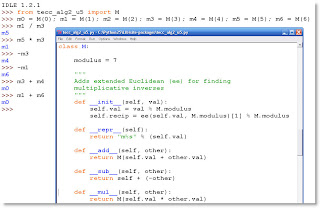
Glenn Stockton knows a lot about the I Ching and gave me a lesson today. I'd studied The Book of Changes before, but never as deeply as Glenn has.
Now I have a new reason to revisit this ancient text: to experiment with unicode in Python.
On the road with Global Data

 Happy Birthday Matt, great being included in your family, since age five or six as the neighborhood newbie. Wonderful seeing all those brothers and sisters again, plus spouses and offspring.
Happy Birthday Matt, great being included in your family, since age five or six as the neighborhood newbie. Wonderful seeing all those brothers and sisters again, plus spouses and offspring.
 Per my Chicago Pycon talk, an early bridge twixt lexical math type expressions and graphical sphere packing ala the IVM (CCP, FCC) are the figurate and polyhedral number sequences, developed minus any foreground coordinate system apparatus, although you need something under the hood in support of the ray tracer (a mechanical device).
Per my Chicago Pycon talk, an early bridge twixt lexical math type expressions and graphical sphere packing ala the IVM (CCP, FCC) are the figurate and polyhedral number sequences, developed minus any foreground coordinate system apparatus, although you need something under the hood in support of the ray tracer (a mechanical device). As I was explaining to Gordon recently, we like to treat our classroom modules (a growing library of py files) like aquariums, small ecosystems. Then we feed their top-level denizens directly, their various functions and class constructors.
As I was explaining to Gordon recently, we like to treat our classroom modules (a growing library of py files) like aquariums, small ecosystems. Then we feed their top-level denizens directly, their various functions and class constructors. We took in Bodies today, now at the Carnegie Science Center in Pittsburgh, PA.
We took in Bodies today, now at the Carnegie Science Center in Pittsburgh, PA.

 Omitted from most journalistic accounts of the mortgage meltdown, is the fact that some well off North Americans no longer dream of McMansions, but have their hearts set on something from the pages of Ecotrust, a very high tech fishing village, complete with broadband and real fishing.
Omitted from most journalistic accounts of the mortgage meltdown, is the fact that some well off North Americans no longer dream of McMansions, but have their hearts set on something from the pages of Ecotrust, a very high tech fishing village, complete with broadband and real fishing.